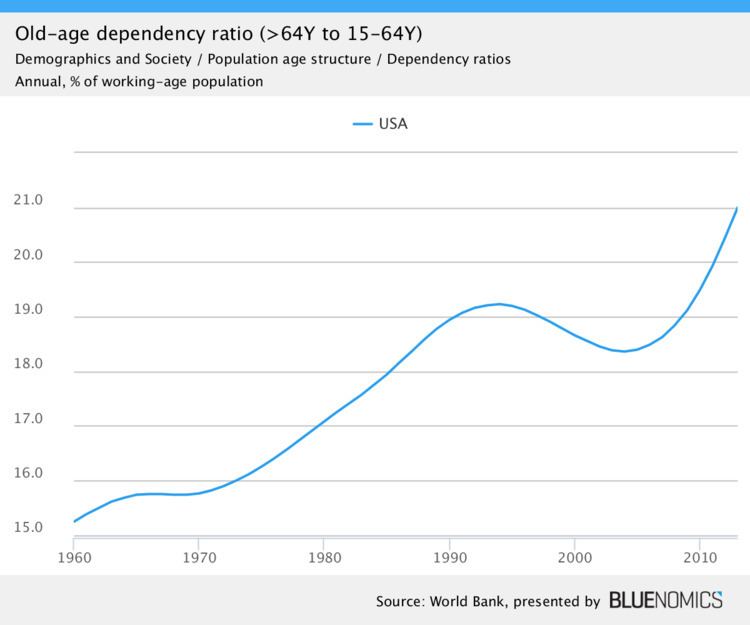 | ||
In economics, geography, demography and Sociology the dependency ratio theory is an age-population ratio of those typically not in the labor force (the dependent part) and those typically in the labor force (the productive part). It is used to measure the pressure on productive population.
Contents
Formula
In published international statistics, the dependent part usually includes those under the age of 15 and over the age of 64.The productive part makes up the population in between, ages 15 – 64. It is normally expressed as a percentage:
As the ratio increases there may be an increased burden on the productive part of the population to maintain the upbringing and pensions of the economically dependent. This results in direct impacts on financial expenditures on things like social security, as well as many indirect consequences.
The (total) dependency ratio can be decomposed into the child dependency ratio and the aged dependency ratio:
World Bank 2010 Age dependency ratio by country
As of 2010, Japan and Europe had high aged dependency ratios compared to other parts of the world.
Inverse
The inverse of the dependency ratio, the inverse dependency ratio can be interpreted as how many independent workers have to provide for one dependent person (pension & expenditure on children).
Issues
A high dependency ratio can cause serious problems for a country if a large proportion of a government's expenditure is on health, social security & education, which are most used by the youngest and the oldest in a population. The fewer people of working age, the fewer the people who can support schools, retirement pensions, disability pensions and other assistances to the youngest and oldest members of a population, often considered the most vulnerable members of society.
Nevertheless, the dependency ratio ignores the fact that the 65+ are not necessarily dependent (an increasing proportion of them are working) and that many of those of 'working age' are actually not working. Alternatives have been developed', such as the 'economic dependency ratio', but they still ignore factors such as increases in productivity and in working hours. Worries about increasing (demographic) dependency ratio should thus be taken with caution.
Migrant Labor Dependency Ratio
Migrant Labor Dependency Ratio (MLDR) is used to describe the extent to which the domestic population is dependent upon migrant labor.
